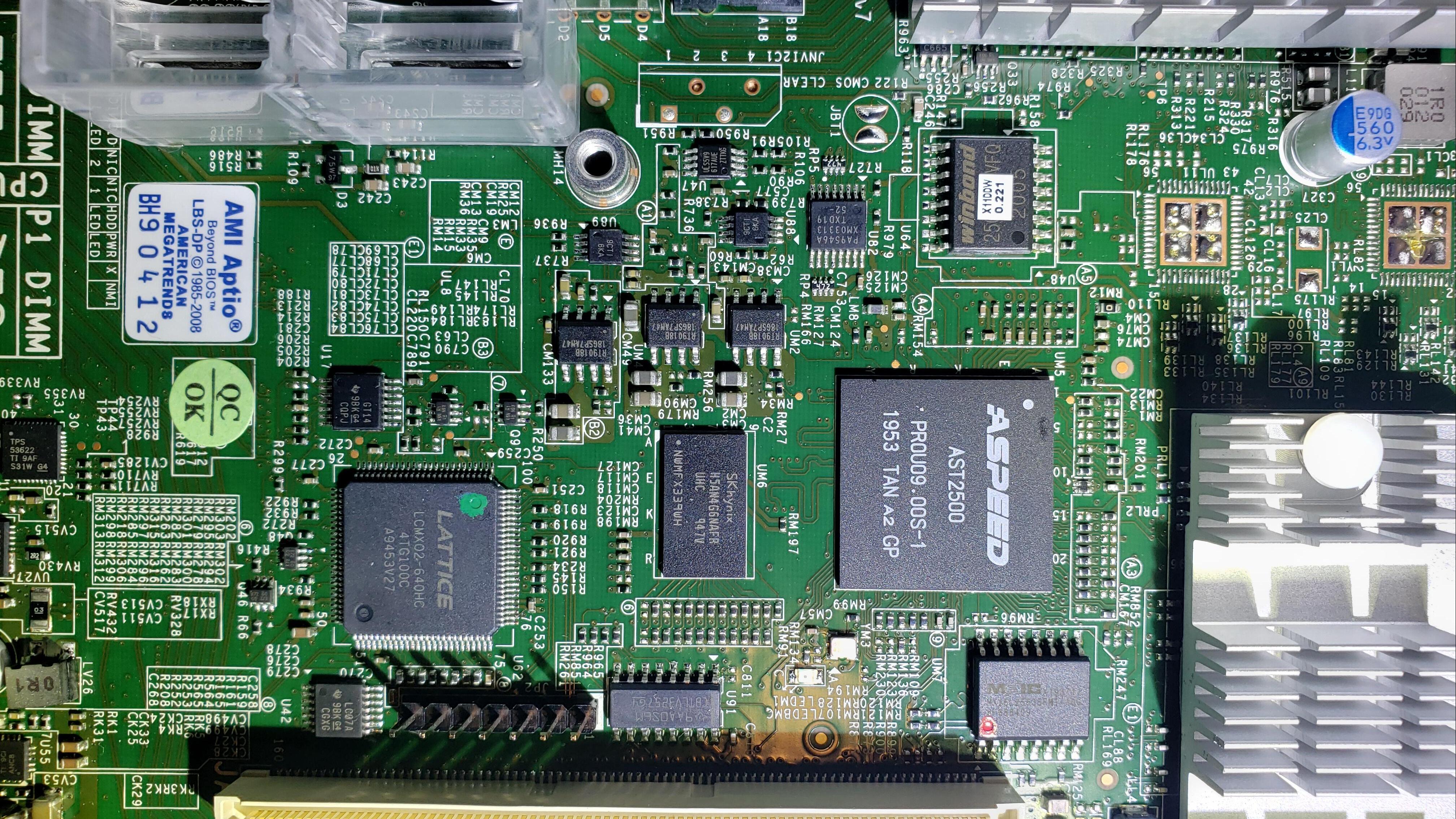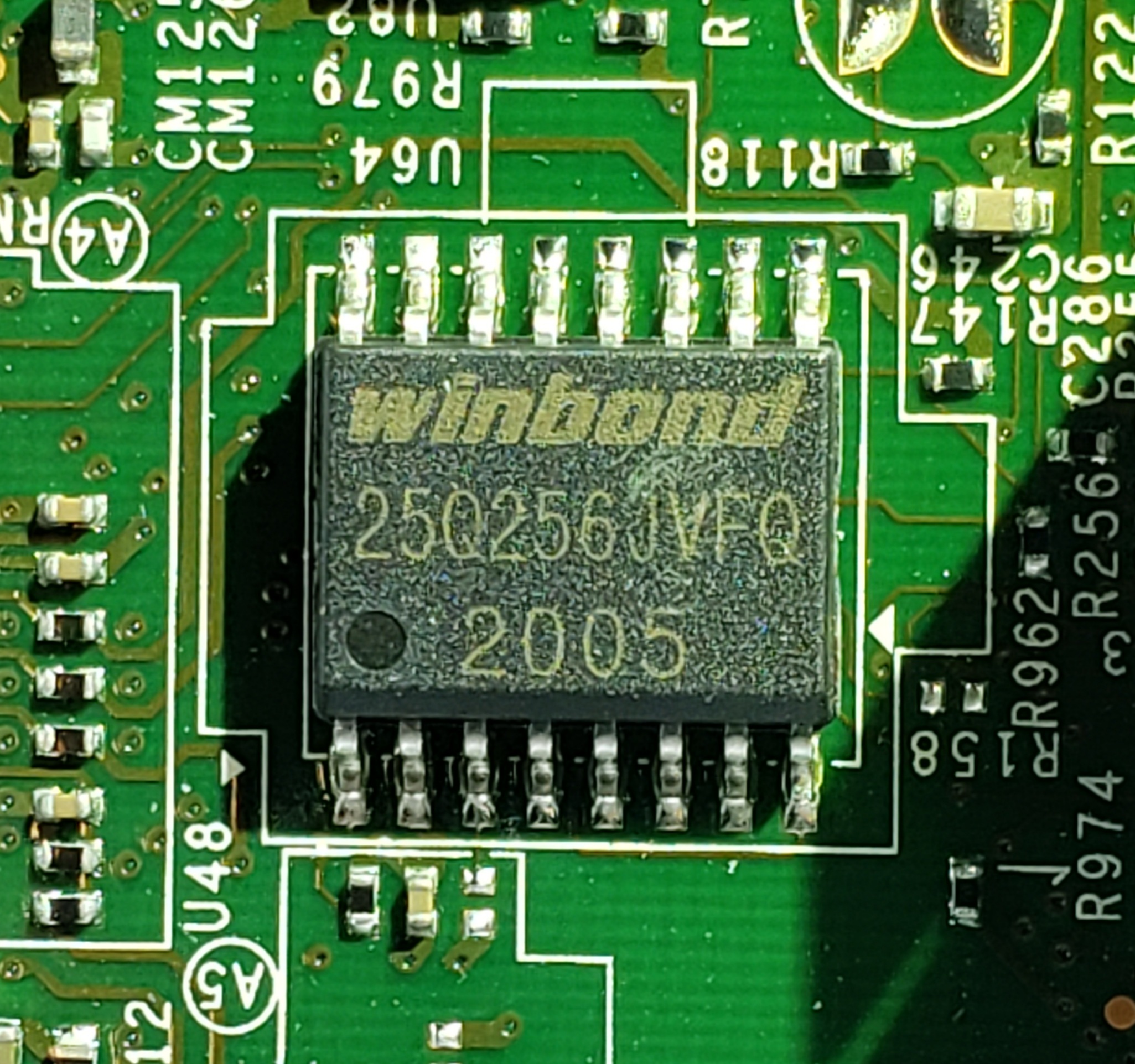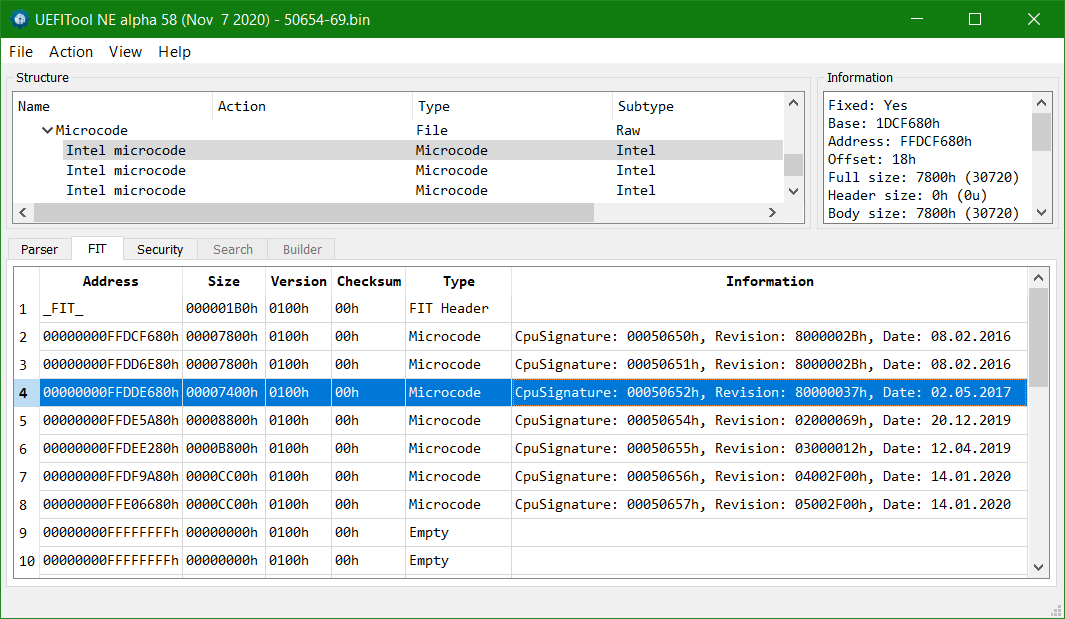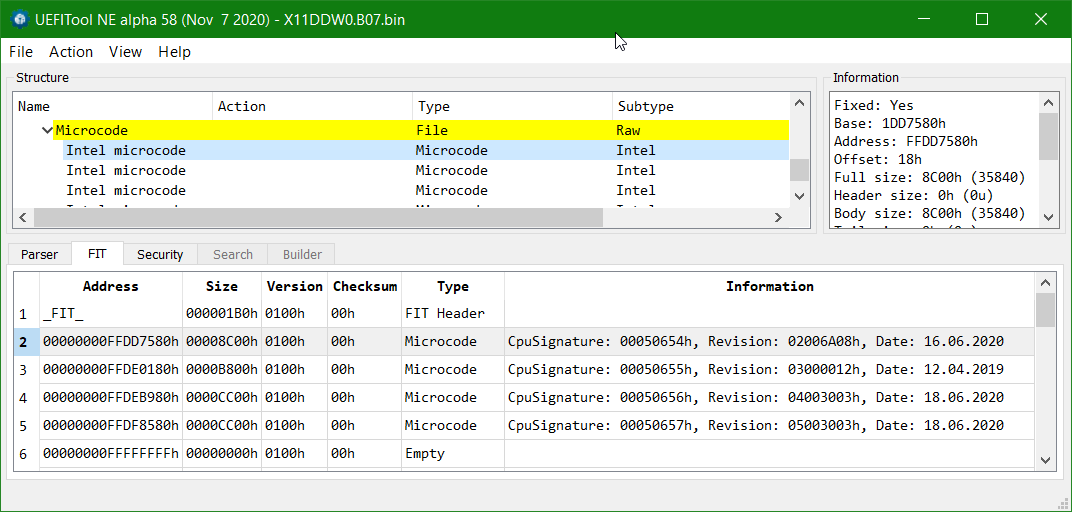@proximaldis10s - You’re welcome!
Sorry, I can’t help with flashing without memory/CPU, you may need to find some supermicro users here and @ tag them to see if it’s even possible
It may not be possible, I think that’s mainly a mainstream board thing (like Asus, MSI, Gigabyte etc), and even there it’s only possible on some of the more model models.
You could chat with supermicro and ask them directly, I think they have chat.
* Unless? Do you have flash programmer, like CH341A? If yes, then I can help
@Lost_N_BIOS If you’re referring to one of these
https://smile.amazon.com/SMAKN-Programme…M/dp/B013Q5P3ES I’ll buy one. It’s immensely cheaper than finding a refurbished non-ES Xeon cpu. If not this, point me in a direction. ![]()
Yes, but you need a bundle/kit, so you get the cable/clip too. Like this - https://www.amazon.com/Organizer-EEPROM-…r/dp/B07V2M5MVH
BUT, before you order anything, make sure to check BIOS chip type to be sure it’s SOIC8. I can’t tell from board images, there’s a few chips that look like SOIC16 in drop/clip-in sockets
You may need to borrow a CPU somehow, or grab one somewhere you can easily return
Ok. When I have hardware in my hands, I’ll hit you up for assistance again.
What tutorials/guides should I read in the meantime ?
@proximaldis10s - Here is guide on using programmer - [GUIDE] Flash BIOS with CH341A programmer
And here is software package with driver + many software/versions, not all compatible with all chip ID’s - http://s000.tinyupload.com/index.php?fil…213094641136166
So, you need to find what kind of BIOS you have, you may need a different cable/clip or drop in adapter than what’s in the kit I linked above.
Does your manual show BIOS chip example on the block diagram? If yes, how many pins?
Show me an image of the board if you can, when time permits, I will see if I can locate the BIOS chip for you.
Did you reach out to Supermicro? If not, do that, via email or chat, they may have some process to update BIOS without CPU/Memory, best to ask in case they do 
Just to update you @Lost_N_BIOS My server arrived today (supermicro SYS-6029P-WTRT with mainboard X11DDW-NT). Getting my ducks in a row before I dig into it. It was built to order, so it’s quite likely going to have the latest BIOS 3.4 loaded. I 'm not sure if that will prevent me from flashing the custom BIOS you edited for @cmoski . The official updated software package for the board is here. https://www.supermicro.com/Bios/softfiles/12570/X11DDW_3_4_AS17305_SUM250.zip
When I reached out to Supermicro previously they were rather prickly about me using ES chips and shut me down pretty quickly with regard to flashing procedures. However, the manual provides a procedure for flashing from USB. (https://www.supermicro.com/manuals/motherboard/C620/MNL-1907.pdf page 76)
I’m hoping the presence of the CPUs and LRDIMMs will give me access to the BIOS utilities, regardless if the pre-production stepping is recognized for boot purposes. I’ll be back after I clean my basement a bit more. lol
X11DDW_Software_Package_Readme
Supermicro System BIOS & IPMI Firmware Update Package Operation Instructions
================================================================================
Please read this document in it before performing the system BIOS or IPMI
firmware update. Please verify that your system meets the requirments.
*********************************************************************
This update package includes the following system software updates & utilities:
— BIOS/IPMI Firmware Update Package —
BIOS - X11DDW0.B07.zip (REV 3.4)
IPMI Firmware - SMT_X11AST2500_173_05.zip (REV 1.73.05)
— BIOS/Firmware Update Tools —
Supermicro Update Manager Utility (SUM) v2.5.0 :
sum_2.5.0_Win_x86_64_20200722.zip (for Windows)
sum_2.5.0_Linux_x86_64_20200722.tar.gz (for Linux)
sum_2.5.0_BSD_x86_64_20200722.tar.gz (for FreeBSD)
Note: For BIOS/firmware update with SUM utility through Out-Of-Band (OOB)
channel, the SFT-OOB-LIC or SFT-DCMS-Single is required for each node.
— Supported Products —
Supermicro Motherboards:
MBD-X11DDW-L
MBD-X11DDW-NT
Important notes
Downgrading BIOS below 2.0 is not supported due to a security revision change.
SYSTEM HARDWARE and FIRMWARE REQUIREMENTS
<NONE>
Warning
1. Do not interrupt, reboot or remove power from your system during the update.
Doing so may cause the system failure.
2. If the software update fails, you may contact our RMA Department to have the BIOS/
IPMI firmware chip reprogrammed. This will require shipping the board to Supermicro
for repair. Please submit your RMA request at:
http://www.supermicro.com/support/rma/.
Readme for X11 AMI BIOS-UEFI
On X11 DP Purley platforms, Supermicro had introduced a jumper-free solution
that places ME into the manufacturing mode. The user doesn’t have to open
the chassis to change the ME-related jumper on the motherboard any more.
The ME manufacturing mode is required upon updating all software-strap
settings in the Flash Descriptor Table (FDT) inside the ME region.
If the user does not use Supermicro’s Purley BIOS flash package, the BIOS
will instruct the AMI AFU tool to terminate the process with the below
message:
"- Error: Please use BIOS flash package from www.supermicro.com for
BIOS update."
The following instructions describe the BIOS upgrade process of the X11
Purley BIOS flash package. Please follow the instructions carefully to
prevent the need of any RMA repair or replacement.
================================================
Standard BIOS Update Procedure under UEFI Shell
================================================
1. Save the BIOS update package to your computer.
2. Extract the files from the UEFI folder of the BIOS package to a USB stick.
(Note: The USB stick doesn’t have to be bootable, but has to be formatted
with the FAT/FAT32 file system.)
3. Plug the USB stick into a USB port, boot to the Build-In UEFI Shell, and
type FLASH.nsh BIOSname#.### to start the BIOS update:
Shell> fs0:
fs0:> cd UEFI
fs0:\UEFI> flash.nsh X11DPU7.218
4. The FLASH.NSH script will compare the Flash Descriptor Table (FDT) code in
the new BIOS with the existing one in the motherboard:
a. If a different FDT is found, a new file, STARTUP.NSH, will be created,
and the system will go into reboot in 10 seconds if no key is pressed.
Press “Y” to go into system reboot right away. At the reboot, hit
“F11” key to invoke the boot menu & boot into the build-in UEFI Shell
again. The BIOS update will resume, automatically.
b. If the FDT is the same, the BIOS update will be started right away. No
reboot will be needed.
5. Do not interrupt the process until the BIOS update is complete.
6. Perform an A/C power cycle after the message indicating the BIOS update
has completed.
7. Go to the BIOS configuration, and restore the BIOS settings.
Notes:
Supermicro no longer supports the BIOS update method in DOS.
If the BIOS flash fails, you may contact our RMA Dept. to have the BIOS
chip reprogrammed. This will require shipping the board to our RMA Dept.
for repair. Please submit your RMA request at
http://www.supermicro.com/support/rma/.
BIOS Naming Convention **********
BIOS name : PPPPPSSY.MDD
PPPPP : 5-Bytes for project name
SS : 2-Bytes supplement for PPPPP (if applicable)
Y : Year, 4 → 2014, 5-> 2015, 6->2016
MDD : Month + Date, for months, A → Oct., B → Nov., C → Dec.
E.g., For BIOS with the build date, 2/18/2017:
X11DPU+ → X11DPU7.218
X11DPi-T → X11DPi7.218
—Last Update on: 12/21/2017—
MBD-X11DDW-NT Rev 1.20

Pretty sure this is the BIOS chip

Data Sheet https://www.winbond.com/resource-files/w…%2009202016.pdf
PACKAGE TYPE: F SOIC-16 300mil
DENSITY: 256M-bit
PRODUCT NUMBER: W25Q256JVFIQ
TOP SIDE MARKING: 25Q256JVFQ
Well, after several attempts I so far cannot access the BIOS with the QL28 CPUs installed. The white Supermicro boot screen hangs at CPU initialization. IPMI/BMC appears as an option when I connect LAN cable to the IPMI jack, but the BMC username and password do not work (they are printed on barcode stickers on the front of the server and on the MBD; I also tried the old ADMIN/ADMIN values, but as I figured, those didn’t work either). I imagine that without the proper BIOS settings, the BMC username/password is useless.
@cmoski doesn’t respond to tell me how they achieved the BIOS update that allowed the use of the QL28s.
I’ve investigated flashing the winbond chip directly with a programmer. However, I haven’t found any certain confirmation that this specific chip can be programmed with the tools posted in this forum. And the winbond chip is also soldered to the board, and I have no confidence in my soldering skills.
I’ve resorted to purchasing an inexpensive used Xeon Bronze CPU ($109 + S/H). I should be able to boot into BIOS with that CPU and hopefully upgrade with the modded BIOS provided by @LOST_N_BIOS. Xeon Bronze should be here in the next 5-7 days.
I received my Xeon Bronze and was able to boot the machine.
Using this AMI microcodes Guide I attempted to add back in the old microcodes, but was completely flummoxed by Step 3. (so out of my depth here)
@Lost_N_BIOS would you be willing to reintroduce the same microcodes into BIOS X11DDW0.B07 that you added into the version you uploaded in message #9 above?
Your work above has the old microcodes for Engineering Samples

The current one has those codes omitted

X11DDW0.B07 can be found in this package. https://www.supermicro.com/Bios/softfile...7305_SUM250.zip
UPDATE: I was able to install the modded v. 3.3 BIOS that @Lost_N_BIOS built. The QL28s are now running the server. So this v3.4 rmod request is only to allow engineering samples to run the latest BIOS.
Since I’m now up and running with v3.3 should I just repost the v3.4 mod request over in REQUESTS?
Bump
I am experiencing the same problem with my X11SPM board. Where did you find the download link for the previous version of BIOS? BIOS v 3.1 for X11SPM should solve this. Thank you!
So from the whole thread i understood, that i can’t update my bios to lower without retail version of the CPU, right?
